You are here
Museum of Art I.V. Savitsky.
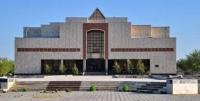
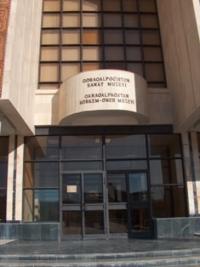
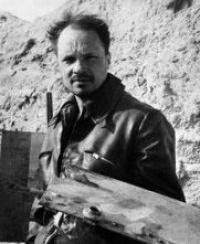
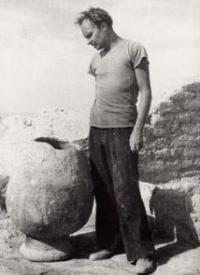
Tours to Savitsky Museum.
“People usually do not admit that they are playing in life, they deny it as a sin, because they only see that the appearance distorts the truth; but it also creates the truth. Each of us is a poet and artist, at least in the bud. The ennobling influence of art lies, among other things, in enriching the external and internal gestures of a person; the quantity and quality of such gestures is culture".
Karol Izhikovsky.
Excursion to Savitsky Museum in Nukus.
The State Museum of Arts of the Republic of Karakalpakstan named after I.V.Savitsky is located along K. Rzayev Street, between Leningradskaya and T. Kayypbyrgenov Rzayev streets. It is a treasury that gives an idea of the cultural segment dating back to the Ist century BC. BC to the present.
Russian artist Igor Savitsky (1915 - 1984) was born in Kiev. He first came to Karakalpakstan in 1950 as an artist with the famous Khorezm archaeological and ethnographic expedition. Fascinated by the culture and people of this steppe area, he remained after the expedition to Karakalpakstan, methodically collecting items of Karakalpak art and textiles.
Shortly thereafter, he began collecting works by Central Asian artists, and subsequently, Russian avant-garde art, works that the Soviet regime rejected and destroyed. As a result of this work, the museum today contains about 20,000 paintings, as well as 70,000 carpets, coins, jewelry and other exhibits from ancient times to modern times.
Here are the objects of the material and artistic culture of ancient Khorezm, the folk applied art of the Karakalpaks. The fine arts department of the museum is the largest artistic discovery. Not only the national art school of Karakalpakstan is concentrated in the museum, but here is the focus of the creations of the founders of the pictorial culture of Uzbekistan, a multinational collective of artists who worked in Central Asia at the beginning of the twentieth century.
The collection of the Russian avant-garde, according to experts, ranks second in the world in terms of importance and scale after the world-famous Russian Museum in St. Petersburg. In an unprecedentedly short time, the museum has turned into a large collection, numbering about 90 thousand items.
This fact has no analogue in the practice of world museum collecting. According to experts and the world press, the museum's collection is the best art collection in the Asian region, it has the second largest collection of works of the Russian avant-garde in terms of importance and number.
A certain contribution to the study of the Khorezm oasis was made by I. Savitsky. Captivated by the idea of preserving a culture unknown to anyone, Savitsky left an apartment in the center of Moscow and moved to live in Nukus.
After moving from Moscow to Nukus, Igor Savitsky actively participated in archaeological research and ethnography of the Karakalpaks, and also collected a collection of ethnographic material on Karakalpakia. In parallel with this, Savitsky was fond of collecting avant-garde works, prohibited under the Soviet political regime.
Thus, he managed to collect a large number of works of art that became the basis for the creation of the museum. Passionate about painting, Savitsky studied with Karakalpak artists. Communication in the artistic environment prompted him to create an art museum. In 1966, Igor Savitsky convinced the city authorities of the need to create such a museum.
In the same year, the city authorities allocated a building for the museum. Having become the director, Savitsky carried out the renovation of the building at his own expense and began to form a collection, buying works of unrecognized and little-known artists.
Fanatical dedication to the idea, titanic efficiency made Igor Vitalievich a legendary man. Thanks to his efforts, in 1966 the State Museum of Arts of the Republic of Karakalpakstan opened its doors to the first visitors.
Until the end of his life, Savitsky was its permanent director. Some of the first authors whose works got into the museum were: A. Isupov, L. Kramarenko, N. Ulyanov, R. Falk, M. Voloshin, R. Mazel, A. Volkov, M. Kurzin, N. Karakhan, U Tansykbaev, V. Ufimtsev and others.
In just a few years, Savitsky managed to collect in the museum one of the most complete collections of fine art of the Russian and Turkestan avant-garde, one of the most significant collections of arts and crafts of Karakalpakstan and a unique collection of archaeological exhibits of Ancient Khorezm.
In 1984, I.V.Savitsky died, and the director of the museum until 2015 was Marinika Maratovna Babanazarova, the daughter of the Karakalpak scientist M. Nurmukhamedov, a friend of I.V. Savitsky. In September 2003, the museum moved to a new three-story building, equipped with international organizations in accordance with modern requirements for storing and exhibiting museum items.
In December 2010, the State Museum of the East hosted a presentation of the documentary film "The Pearl of Uzbekistan" dedicated to I. A. Savitsky and the State Museum of Arts named after him. The museum's modern collection contains over 90,000 different exhibits.
Among them are works of the Russian avant-garde, paintings by Uzbek artists, as well as items of applied art of Karakalpakstan and the art of Ancient Khorezm. The collection contains several copies of the Louvre exhibits.
Specialists of the collection of the State Museum of the Republic of Karakalpakstan named after I.V. Savitsky are recognized as the second largest collection of works of the Russian avant-garde in the world in terms of importance and volume after the collection of the Russian Museum (St. Petersburg), as well as one of the best collections in the Asian region.
The museum collection contains paintings by artists such as:
Vasily Lysenko (1903 - 1970s?),
Alexander Volkov (1886 - 1957),
Mikhail Kurzin (1888 - 1957),
Alexander Nikolaev (1887 - 1957);
Nadezhda Borovaya (Terentyeva) (1909 - 1987);
Amshey Nuremberg (1887 - 1979),
Alexander Kuprin (1880 - 1960),
Alexander Ivanov (1892 - 1989),
Konstantinov Fedor (1882 - 1964).
Geographic coordinates of the Savitsky Museum in the town of Nukus: N42 ° 27'56.61 "E59 ° 36'44.54"

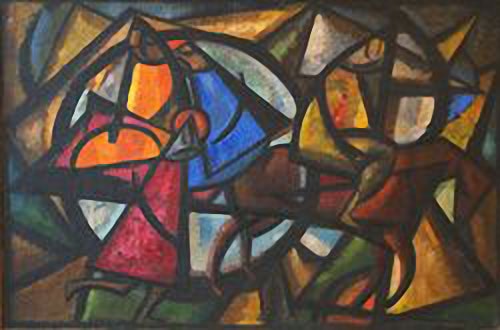


Authority:
http://www.discovery-central-asia.com







